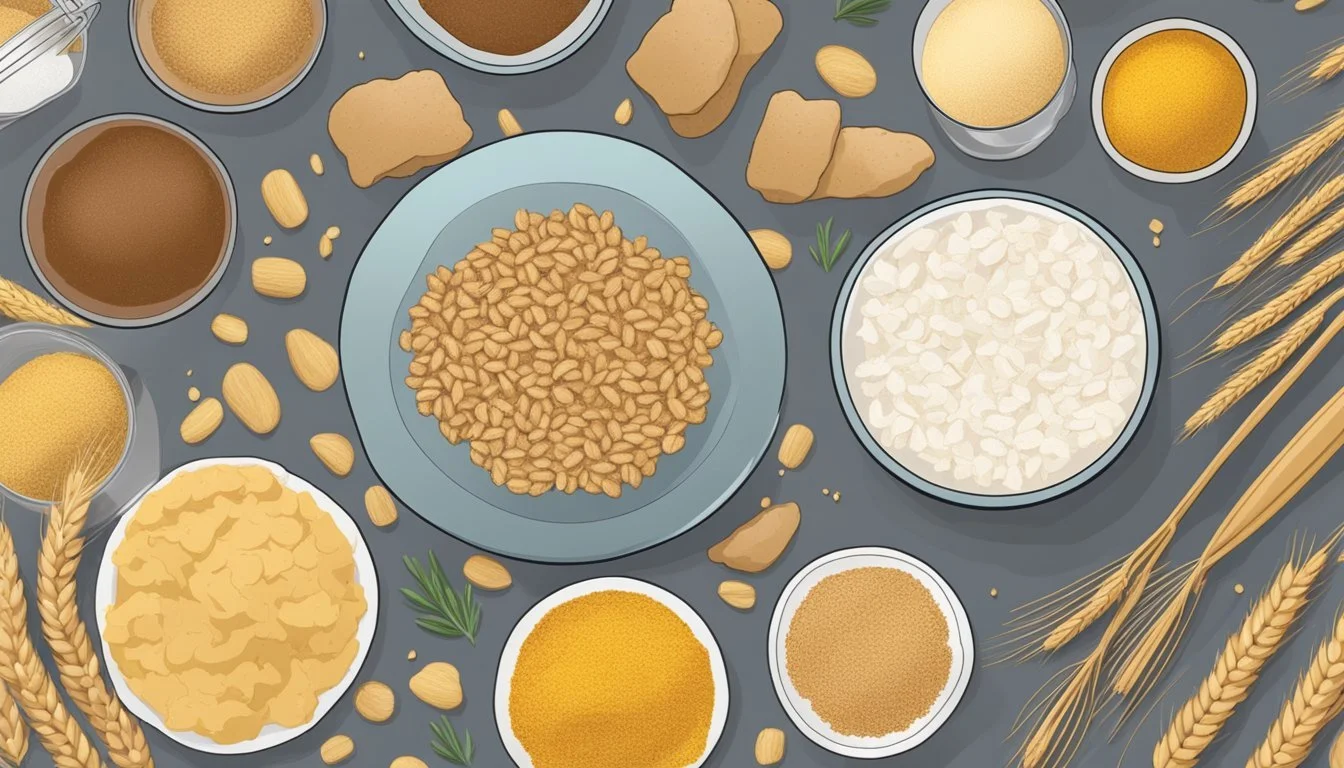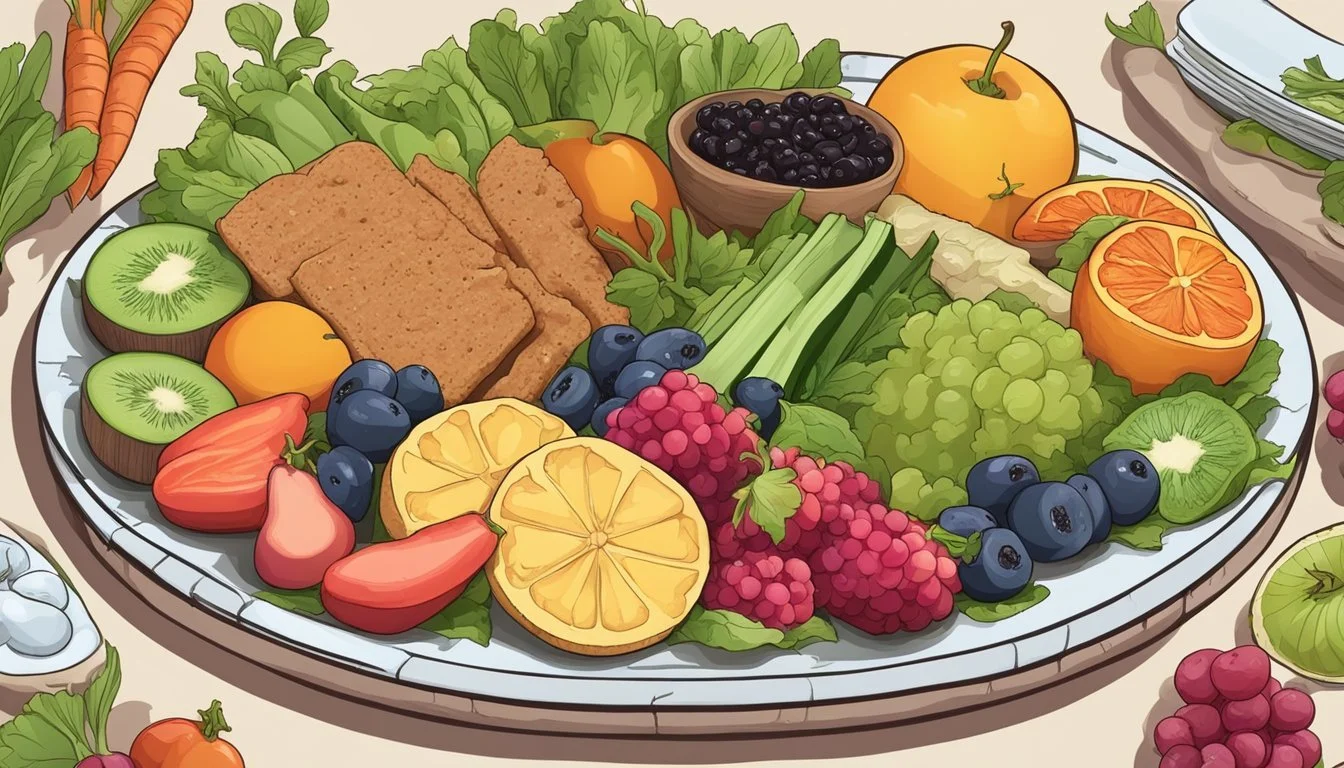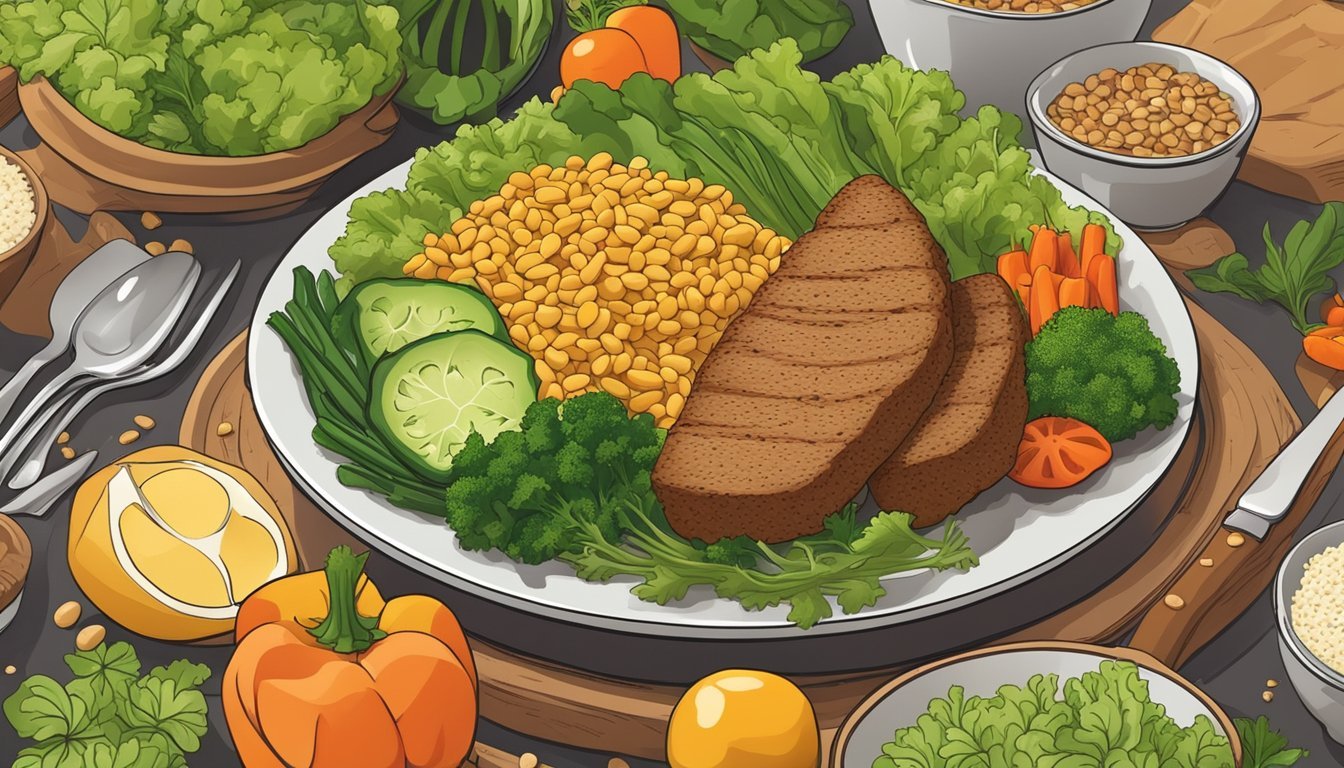Is Seitan Vegan?
Unveiling the Truth About This Meat Substitute
Seitan (What wine goes well with seitan?) is considered vegan as it is a plant-based protein source made from vital wheat gluten and water. It has become a staple in vegan and vegetarian diets as a versatile substitute for meat due to its dense, chewy texture that closely resembles the bite of animal proteins. Valued for centuries, especially within Asian cuisines, it is known for its ability to adapt to a wide range of flavors, making it an ideal meat alternative for many dishes.
The production of seitan involves washing wheat flour dough with water until all the starch granules are removed, leaving behind a sticky mass of pure gluten protein. This gluten is then cooked in a savory broth to enhance its flavor and give it a firmer texture. The final product can take on many forms, such as strips, slices, or chunks, which can then be incorporated into various recipes. Seitan's high protein content and meat-like qualities make it a popular choice for those following a plant-based diet while seeking to maintain a diverse and protein-rich meal plan.
What Is Seitan?
Seitan is a versatile plant-based protein that has played a significant role as a meat substitute, particularly in vegetarian and vegan diets. Originating in Asia, it has gained popularity across the globe for its meat-like texture and nutritional benefits.
History and Origins
Seitan originated in ancient China and Japan, where it was commonly consumed by Buddhist monks as a substitute for meat. These monks recognized the protein-rich characteristics of wheat gluten, which is the key component of seitan.
Definition and Components
Seitan is primarily made from wheat gluten, which is the main protein found in wheat. It is produced by hydrating wheat flour to activate the gluten and then processing it to remove all starch. Commercial seitan may also include additional seasoning and flavors.
Understanding Gluten
Gluten is a family of proteins found in wheat, barley, and rye. It's responsible for the elastic texture of dough and often vilified in the context of gluten sensitivity and celiac disease. However, for individuals without these conditions, gluten is typically harmless.
Seitan and Veganism
Seitan is entirely vegan, making it an ideal meat alternative for those following a plant-based diet. It's appreciated for its substantial protein content and its ability to adopt a range of tastes and textures.
Nutritional Profile
Nutritional Composition of Seitan (per 100g):
Protein: Approximately 25g
Iron: Varies, but generally high
Calcium: Moderate amounts
Selenium: Contains traces
Fat: Low
Carbohydrates: Low
Calories: Low
Essential Amino Acids: Present
Culinary Uses
Seitan can be found in various forms, such as ground, sliced, or in strips, and it's prevalent in commercially available vegan products. Its meaty texture allows it to be used in a myriad of dishes, from stir-fries to faux meats.
Comparison with Other Meat Alternatives
Seitan is one of several meat alternatives, alongside tofu and tempeh, which are derived from soy. Different from its counterparts, seitan stands out for its wheat protein basis and meat-like consistency.
Pronunciation
Seitan is pronounced as "say-tahn" or "say-tan," depending on regional variations in English.
Seitan's characteristics such as texture, nutritional content, and its vegan nature make it a favorable choice in various cuisines, reaching beyond its traditional use in Asian dishes.
Preparing Seitan
Seitan preparation involves mixing vital wheat gluten with liquid and seasonings, followed by various cooking techniques to achieve the desired texture.
Basic Seitan Recipe
To create a basic vegan seitan recipe, combine vital wheat gluten with a liquid such as water or vegetable broth, and season with soy sauce, garlic powder, and onion powder. The standard ratio for the dough is one part vital wheat gluten to roughly three-quarters part liquid.
Cooking Techniques
Simmering is a common method, where seitan dough is cooked in a seasoned broth for about an hour, causing it to expand and develop a chewy texture. Alternative methods include baking, which gives a crusty exterior, and steaming, which keeps the seitan moist.
Flavoring and Seasoning
Seitan's flavor is enhanced with a variety of seasonings. Mix spices such as paprika, nutritional yeast, and herbs into the dough. Marinating the seitan before or after cooking can also infuse more flavor.
Homemade vs. Store-Bought
Homemade seitan is customizable and fresh, whereas store-bought seitan is convenient but may contain additives. Both options provide a high-protein, low-fat addition to a vegan diet.
Textures and Forms
Seitan can be prepared with different textures, ranging from soft and tender to firm and chewy. Manipulate texture by adjusting the kneading time: less kneading for tender seitan or more for a chewier version.
Shaping Seitan
After mixing and resting the dough, shape the seitan into slices, burgers, steaks, or kebabs according to the intended use. This malleability makes seitan a versatile ingredient in vegan cuisine.
Storing and Preservation
Seitan should be stored in the refrigerator, where it can last for up to a week. For longer storage, freezing is effective; wrap the seitan tightly and freeze for several months.
Common Mistakes to Avoid
Avoid over-kneading the dough as it can result in a rubbery texture. Be sure not to boil seitan during simmering, as it can cause it to become spongy._batches of seitan for consistent results.
Seitan in a Vegan Diet
Seitan, commonly known as wheat gluten, has carved a niche for itself as a high-protein staple in vegan diets, offering a texture akin to meat which integrates well into a variety of dishes.
Protein Content and Quality
Seitan is a compelling protein source for those on a vegan diet, largely due to its rich protein content. It is crafted from vital wheat gluten, which is essentially the protein portion of wheat. A single serving of seitan can boast up to 46 grams of protein, making it a stronger protein source than tofu and many other plant-based alternatives.
However, while seitan is high in protein, it does not provide a complete protein profile as it is low in the essential amino acid lysine. Vegans may consider pairing seitan with lysine-rich foods such as lentils or beans to ensure a well-rounded amino acid intake.
Integrating Seitan into Meals
Seitan's meat-like texture and versatility make it a seamless addition to various vegan recipes. It excels in traditional meat-centric dishes such as tacos, stir-fry, fajitas, stews, and is often incorporated in vegan gravy. The key to achieving a savory depth of flavor with seitan lies in proper seasoning and cooking techniques.
Stir-Fry: Seitan absorbs flavors from soy sauce and vegetable stock, becoming a satisfying component alongside stir-fried vegetables.
Stews: Its hearty consistency can withstand slow-cooking without falling apart, adding substance to vegan stews.
Tacos and Fajitas: When sliced thin and seasoned, seitan mimics the texture of meat, ideal for filling tacos and fajitas.
Gravy: Ground seitan can be used as a thickener for gravies, adding both texture and protein content.
By incorporating seitan as a plant-based protein choice, vegans can enjoy a vast array of meals high in protein and explore creative vegan meat alternatives that are both satisfying and nutritious.
Health Considerations
When evaluating whether seitan is a viable vegan protein option, one must consider its impact on allergies, its nutritional profile, and how it fits into various dietary restrictions.
Allergies and Sensitivities
Seitan, as a product made from vital wheat gluten, is unsuitable for individuals with celiac disease or gluten sensitivity. Consumption of gluten by those with these conditions can lead to serious gastrointestinal issues and other health complications. It is imperative for individuals with gluten-related disorders to avoid seitan entirely.
Nutritional Balance
Seitan is a high-protein food that offers a range of amino acids, including all nine essential amino acids. It is also low in fat and contains modest amounts of iron and other minerals. However, seitan is not a significant source of calcium, and its sodium content can vary based on preparation methods. It's important for individuals to consume seitan as part of a balanced diet that includes other sources of nutrition.
Nutrient Seitan Content Protein High Fat Low Iron Moderate Calcium Low Sodium Varies
Dietary Restrictions
For those following a vegetarian or vegan diet, seitan can be a healthy protein substitute; it is completely plant-based. However, its use must be assessed within the context of an individual's overall dietary needs and health goals. One should ensure that the inclusion of seitan does not exacerbate any existing dietary restrictions or health issues.
Seitan's Role in Sustainable Eating
Seitan emerges as a significant player in the movement toward sustainable eating, offering an eco-friendly alternative to meat with advantages that extend beyond environmental concerns.
Environmental Impact of Meat vs. Plant-Based Proteins
The production of meat, particularly from resources-intensive livestock like cattle, contributes significantly to greenhouse gas emissions, water usage, and land degradation. In contrast, plant-based proteins, such as seitan, are associated with a much lower environmental footprint. Made from vital wheat gluten, seitan requires fewer agricultural inputs and generates less pollution. A comparison between the two illustrates the stark differences:
Resource Meat Production (Beef) Seitan Production Water Usage High (up to 15,000 liters/kg) Relatively Low Greenhouse Gas Emissions High (beef cattle: 60-150 kg CO2-eq/kg) Much Lower Land Use Extensive (grazing and feed production) More Efficient
Seitan is an environmentally friendly choice for those looking to reduce their carbon footprint and support a more sustainable food system.
The Economic Advantage of Homemade Seitan
When it comes to preparation and economics, homemade seitan is cost-effective. Commercial meat substitutes can sometimes be expensive, but individuals can make seitan in bulk using vital wheat gluten, which is inexpensive and widely available. The process involves mixing the gluten with water and seasonings, then cooking it through boiling, steaming, or baking. This retains the high protein content while minimizing costs.
Cost of Ingredients for Homemade Seitan:
Vital Wheat Gluten: Low
Water: Negligible
Seasonings: Variable, can be tailored to preference and budget
By producing seitan at home, consumers can control their expenses and avoid the premium pricing of pre-packaged meat alternatives. Homemade seitan not only serves as a vegan meat alternative but does so in a sustainable and economically thoughtful way.
Innovations in Seitan Products
Seitan, as a venerable staple in the vegan diet, has undergone considerable innovations, particularly as vegan butchery evolves and gourmet cuisine incorporates this ingredient into sophisticated dishes. These innovations cater to both the food service industry and retail, with future trends indicating a shift towards more versatile and meat-like products.
Vegan Butchery
Vegan butchery has transformed the way seitan is perceived and used. Once a simple meat alternative, seitan is now crafted into intricate forms like vegan steak, with textures and flavors honed to closely resemble traditional meat. This specialty has emerged from the rising trend of plant-based diets and the improvement of meat analogues to enhance the sensory experience of vegan and vegetarian consumers.
Gourmet Seitan Cuisine
Gourmet seitan cuisine is on the rise, integrating seitan into high-end vegan recipes. Chefs have started to explore this protein-rich ingredient, creating sophisticated dishes that could stand alongside their non-vegan counterparts. The versatility of seitan allows for numerous culinary techniques to be applied, resulting in innovative dishes that push beyond the boundaries of traditional vegan food trends.
Seitan in Food Service and Retail
In food service and retail, seitan has made its mark as a readily available and convenient option. Vegan seitan products are now prevalent in the refrigerated sections of natural food stores, including ready-to-eat options that satisfy the demand for convenient, healthy food products. Food services also benefit from seitan’s versatility, using it in a various range of dishes that appeal to both vegans and non-vegans alike.
Future Trends in Seitan Use
Future trends in seitan use point towards a continued growth, with innovations focusing on taste and flavor enhancements. The development is aimed at producing more nuanced seitan-based products, such as vegan cheese and complex flavored meats, meeting the changing tastes of consumers and the broadening appeal of vegan meat alternatives in the market. These trends are also likely to influence home cooks, leading to a greater variety of seitan-based vegan recipes for everyday meals.
Frequently Asked Questions
In this section, readers will find answers to some of the most common inquiries about seitan, ranging from its pronunciation to its dietary considerations and cooking tips.
How to Pronounce Seitan?
Seitan is pronounced as "say-tahn." Understanding the correct pronunciation can help ensure effective communication, especially in culinary settings.
Is Seitan Gluten-Free?
Seitan is not gluten-free; it is made from vital wheat gluten, which is the protein found in wheat. Individuals with gluten sensitivity or gluten intolerance should avoid seitan.
Can Seitan Be Made Soy-Free?
Yes, seitan can be made soy-free. Although many recipes include soy sauce for flavor, alternatives like coconut aminos or liquid aminos can be used to accommodate soy allergies.
Does Seitan Taste Like Meat?
Seitan has a savory flavor and a meaty texture that can resemble meat when cooked properly, especially when seasoned with the right spices and marinades.
How to Make Seitan Taste Better?
To enhance the flavor of seitan:
Use bold seasonings: Incorporate a variety of spices and herbs.
Employ marinades: Allow seitan to marinate to absorb additional flavors.
Experiment with cooking techniques: Baking, steaming, sautéing, or grilling can impart different flavors and textures.






